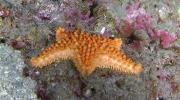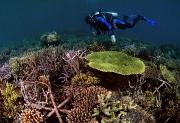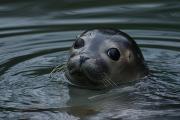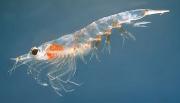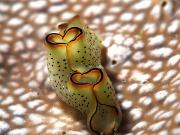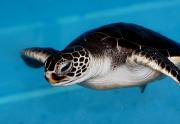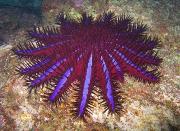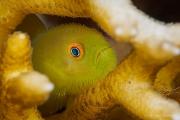Articles
The Marine Science Institute's monthly column, Science and the SeaTM, is an informative and entertaining article that explains many interesting features of the marine environment and the creatures that live there. Science and the SeaTM articles appear monthly in one of Texas' most widely read fishing magazines, Texas Saltwater Fishing, the Port Aransas South Jetty newspaper, the Flour Bluff News, and the Island Moon newspaper. Our article archive is available also on our website.
As any parent or teacher knows, a roomful of kids suddenly going silent could mean trouble. As it turns out, coral reefs have their own soundscape, and a quieter reef may also suggest trouble.
Scientists can monitor a reef’s changes by eavesdropping on the sounds made by its inhabitants. This approach provides more information than visually observing the reef or calculating coral coverage, and it tells biologists more about the reef’s health.
More than four decades ago, a seal named Hoover began captivating visitors at Boston’s New England Aquarium. It wasn’t his slick swimming or friendly face drawing visitors to his tank. It was that Hoover, a harbor seal rescued by Maine fishermen as a pup, seemed to call out in a gruff voice, “Come over here!” The first time Hoover seemingly spoke in his deep, Maine-accented voice in 1978, museum workers wondered if it was a fluke.
The human body relies on sunlight to synchronize its internal clock. Light controls the release of hormones that tell our bodies whether it’s time to be alert or time to sleep—despite most of us needing an alarm clock to wake up. Most other animals, even those that are nocturnal, use sunlight to maintain their internal clocks as well.
When most people hear “shark,” they picture a large, sleek-bodied predator slicing through the open water, perhaps with the triangle of its dorsal fin poking through the surface as a warning. But there are more than 1,000 species of sharks of all shapes and sizes—including some small sharks that are adapted to living in very shallow water.
In storybook tales of old, sailors feared the Sargasso Sea as a mythically cursed region where the mightiest ships mysteriously vanished. Those stories, of course, are pure fantasy. This legendary sea doesn’t actually harbor a graveyard of doomed ships. But scientists have recently learned of an even greater treasure hidden below its famously calm blue waters—one that provides clues to an entirely different mystery.
Many microbes perform a key function in the cycle of life: breaking down dead and decaying organisms. But this important process often releases methane, a greenhouse gas that traps heat in the atmosphere 25 times more effectively than carbon dioxide. Now, however, a team of researchers from The University of Texas at Austin’s Marine Science Institute, working with scientists in China and The University of California at Berkeley, have discovered a new group of microbes that break down organic matter without producing methane.
Crown of thorns sea stars are dangerous predators on coral reefs. The sea stars are intimidating creatures that can grow to nearly a foot and a half across. Their multiple arms—up to 21 on a single individual—are covered in long, toxin-tipped spines, and they feed on coral. They can devastate entire reefs. One of the sea stars’ primary natural predators, the giant triton snail, is a threatened species, so it has been unable to prevent the crown of thorns from taking over massive coral reef regions in the Pacific Ocean.
You’ve probably heard that birds of a feather flock together. It turns out the same may be true for reef fish called emerald coral gobies. These fish live in small groups that include a single breeding pair and a host of subordinates who are ready to step in and take over as the male or female breeder if one of them dies. Scientists have learned from past research that these non-breeding subordinate gobies stick around in each group because being together offers them safety. The remaining question was why the larger breeders were willing to share space and resources with the hangers-on.

